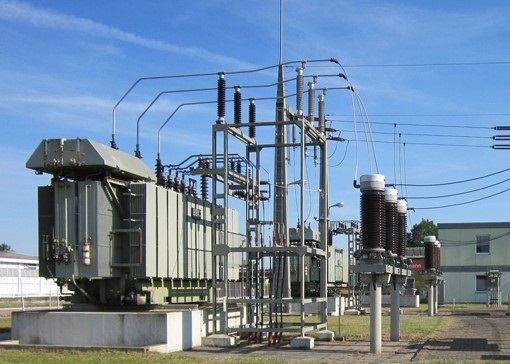Cable Sizing Calculation – Low Voltage
INPUT DATA
System voltage |
415 V |
Type of Insulation |
XLPE |
Type of conductor |
Copper |
Maximum Ambient air temperature |
40° |
Ground temperature |
30° |
Continuous temperature of the cable |
90° |
Maximum short circuit temperature of the cable |
250° |
Load details |
|
Power Rating of motor |
90 kW |
Source Voltage |
415 V |
Efficiency |
0.9 |
Power factor |
0.85 |
Cable details |
|
Length |
120 m |
Resistance of the conductor (95mm2) |
0.247 ohm/km (As per Cable Catalogue) |
Reactance of the conductor (95mm2) |
0.0734 ohm/km (As per Cable Catalogue) |
CABLE SIZING CALCULATION CRITERIA
The minimum cross section of LV voltage cables shall be calculated based on below methods:
- Short circuit current capacity
- Current carrying capacity
- Voltage drop of cable
1. Short circuit current capacity
This criteria defines the minimum cross section required for the cable.

A |
= |
Cable cross-section area in Sq. mm |
= |
Short circuit current |
|
K |
= |
Constant, 143 for XLPE Cu. Cable |
t |
= |
Duration of short-circuit in seconds |
The fault current at 415V is 40kA and the duration t is considered to be 0.1 based on relay delay time and breaker opening time.

The next nearest available cable size will be 95 Sq.mm
2. Current carrying capacity
| Derating Factors considered for multicore cables laid in duct | ||||
| Installation method | : | Direct buried | ||
| Ground temperature | : | 30°C | ||
| Soil Thermal Resistivity | : | 2.5 K.m/W | ||
| Depth of Laying | : | 75 cm | ||
| Cable Grouping: | ||||
| No. of cables in group | : | 1 | ||
| Spacing between duct centres | : | 0 mm | ||
| Correction Factor | ||||
| Derating factor for variation in ground temperature at 30°C | k1 | : | 0.93 | (As per IEC 60364-5-52,
Table B.52.15 ) |
| Derating factor for depth of laying of cable | k2 | : | 1 | (As per cable catalogue) |
| Derating factor for soil and thermal resistivity | k3 | : | 1 | (As per IEC 60364-5-52,
Table B.52.16 ) |
| Derating factor for cable grouping factor | k4 | : | 1 | (As per IEC 60364-5-52, Table B.52.17 ) |
| Overall correction factor for cables installed in Underground duct (k1 x k2 x k3 x k4) | : | 0.93 | ||
Number of Runs / Phase |
: |
1 |
|
Current rating for 95 Sq.mm Cu. Cable (Duct) |
: |
211 |
(As per IEC 60502-1 ) |
Derating factor |
: |
0.93 |
|
Derated current carrying capacity I(Derated) |
: |
196.23 |

The cable current carrying capacity under derated condition must be greater than the full load current ( I < I(Derated) ). If it is not greater, then increase the cross section of the cable or the number of runs.
- Increasing the cable cross section or the number of runs depends on the area of use and the application.
- Sometimes increasing cross section of the cable limits the smooth termination of the cable to the motor terminal.
- Sometimes increasing the number of runs will also cause disturbance so in that case increasing cross section will be used.
3. Voltage drop of cable
The cable has its resistance and reactance causing some voltage drop. Motor takes 6 to 12 times the full load current during starting. The voltage drop criteria has to be checked in order to have sufficient voltage to develop load torque.
Number of Runs / Phase |
: |
1 |
||
Resistance of the conductor (95mm2) |
: |
0.247 |
ohm/km |
(As per Cable catalogue) |
Reactance of the conductor (95mm2) |
: |
0.0734 |
ohm/km |
(As per Cable catalogue) |
Voltage |
: |
415 |
V |
The three phase voltage drop

Where,
L |
= |
Length of cable (m) |
R |
= |
Cable resistance at 90°C – Ohm/km |
X |
= |
Cable reactance at 50 Hz |
I |
= |
Rated current (A) |
n |
= |
No. of Parallel runs |
cos ø |
= |
Power factor |
Ist |
= |
Starting current |
cos øst |
= |
Power factor at starting |


The voltage drop during running must be less than 3% (V(Running) < 3%)
The voltage drop during starting must be less than 10 to 15% ( V(Starting) <10-15%)
According to three major criteria, the cable size selected is 95mm2
Gokul S
– Power system Engineer




Clear explanation… Mr. Gogul S, thanks for wonderful efforts.. And knowledge.
Thanks
Thanks bro for clear and useful calculations
One more important Criteria must include “earth loop impedance criteria”.
This Criteria is must be checked where upstream protection done by fuses.
Also, in case of lighting circuit where RCCB Or ELCB is used for protection.
Thanks for your feedback
kindly look into these three points
1.correction required-L= cable length in meters not cross section,
2. How you got 10-15% VD allowance for motors(at starting of motors)
3.why effeciency of motor is considered while calculating the amount of current it will draw.
Thanks for your feedback,
80% voltage drop is allowable in motor terminal as per IEEE3002.7 and voltage sensitive devices such as drives will drop out if voltage drop exceed 15% and this limit is followed in industrial practice
For calculating full load current efficiency value must be considered
Because motor rating means mechanical output and in order to convert it to electrical input, we must divide by efficiency.
Sir I wanted to know for SC Sizing of the cable, which SC current I have to consider. Cable through fault current or SC current of the Bus.?
Please clarify.
We have to consider the SC Current of the bus for SC sizing of cable
Why bus bar fault current to be considered for Cable SC Capacity? Cable would only see through fault current. I am not clear with this concept. Can you please clarify.
How do you get the K value (143 for XLPE Cu cable)
we can use cable catalouge for xlpe or pvc depends on the cu/Al.
how do you get the k value for 143
The IEC 60364-5-54 Annex -A method calculates the factor K, depending on conductor material/insulation, and the operating/limiting temperatures.
how i can insert this cable into new library to Etab
How to calculate for HV cables ?